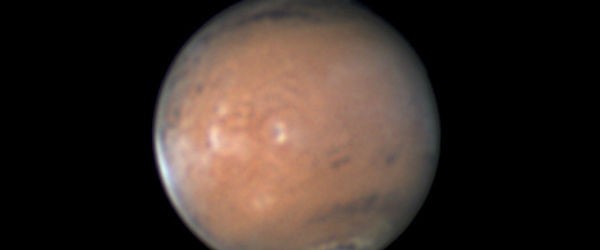
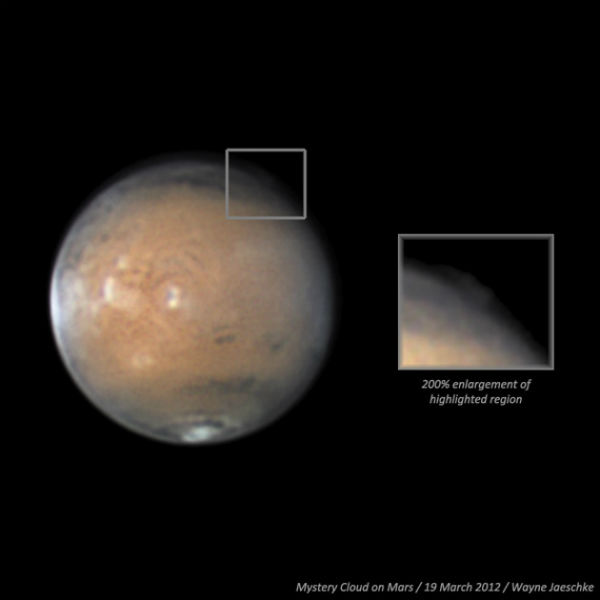
On
March 20th, the slightly gibbous disk of Mars showed an unusual
extension along the day-night terminator in its southern hemisphere
(white line). This image is shown south up, as it would appear in many
telescopes. (Credit: Wayne Jaeschke)
(Credit: Jim Phillips South Carolina,U.S.A)”]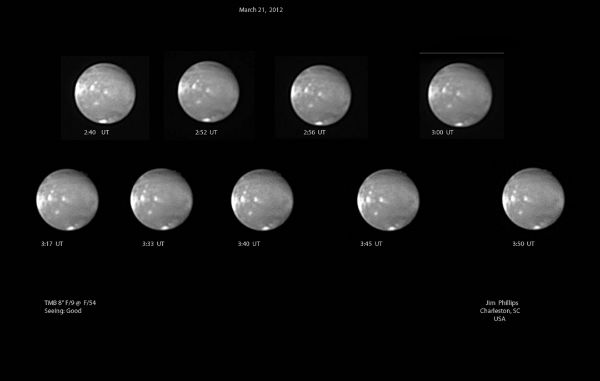
Atmospheric
researchers from Arizona State University are pretty excited about the
possibility of not only getting a good look at the cloud structures,
but also their temperatures. Whatever it is – or was – the feature is
diminishing in size. This has led some to believe that it was some sort
of transient-type event. Some suggestions are that it could be a dust
cloud from a meteorite impact, a massive storm system or a trick of
light. The THEMIS data for the area isn’t showing enough dust in the
upper atmosphere to suggest a dust plume from an impact. The most likely
scenario at this time is a major mesospheric cloud being caught in
sunlight where the sun had risen at the cloud but not on the underlying
ground. Some suggest that it could be aurora display but Mars doesn’t
have a global magnetic like Earths, thus aurora wouldn’t be concentrated
near the poles, if there is any aurora activity on Mars at all. Mars
Global Surveyor mapped ‘umbrella-like’ localized fields back in
2004. Observations by the SPICAM instrument (Spectroscopy for the
Investigations and the Characteristics of the Atmosphere on Mars) made
on 11 August 2004, revealed light emissions now interpreted as an
aurora. This feature is very localized and has shown up at the same time
each day on Mars for at least 11 days in a row. Bruce Cantor at the
Malin Space Science Institute says its most likely a condensate/haze
cloud made up of water.

Mysterious cloud seen on this images from March 21st - [CLICK ON IMAGE FOR LARGER VIEW
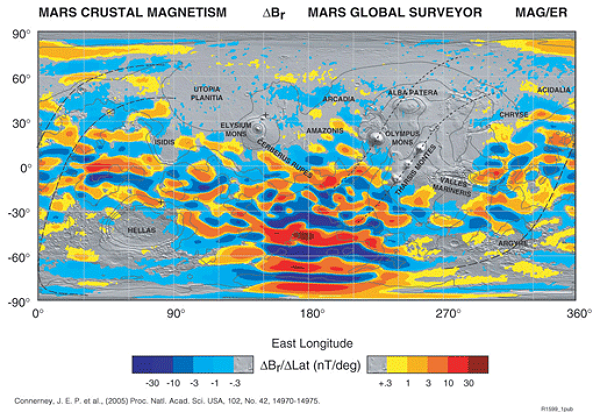
This
is a map of the magnetic field of Mars observed by the Mars Global
Surveyor satellite at a nominal 400 km altitude. Red and blue stripes
represent magnetic fields with opposite directions. Darker hues
represent more intense magnetic fields. To show the location of the
magnetic stripes on Mars, the map is superimposed on a topography relief
map from the Mars Observer Laser Altimeter instrument. (Credit: NASA)
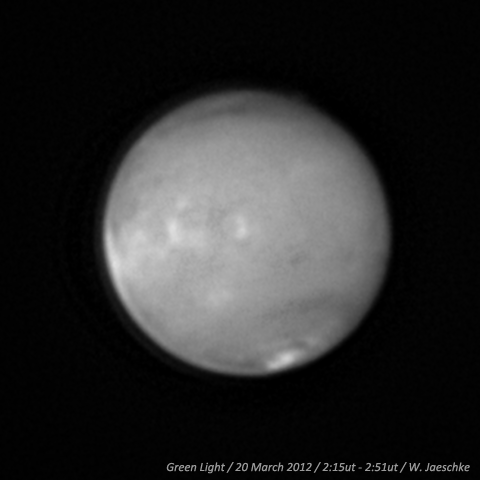
Arizona State University astronomer Jonathon Hill and his colleagues will be looking at the area where the cloud was spotted using the Thermal Emission Imaging System, or THEMIS, which is one of the instruments on NASA’s Mars Odyssey orbiter. THEMIS will be checking out heightened cloud activity around Mars’ shield volcanoes as well as around the southern site spotted by the amateurs. Pictures from a camera on NASA’s Mars Reconnaissance Orbiter, called the Mars Color Imager, or MARCI, might provide further clues about the southern cloud feature. And amateur astronomers are sending out the alert for observers to keep a close watch on the Red Planet over the coming days.
There’s been lots of buzz about the high-altitude cloud on Cloudy Nights and other online discussion forums for skywatchers. Sky & Telescope’s Sean Walker says the puff of white was first noticed on March 20 by Wayne Jaeschke, an amateur astrophotographer from Pennsylvania. Since then, other observers have identified the feature in images going back as far as March 12.
Although unusual, similar “terminator projections” have been noted throughout observational history of the Red Planet, the last being imaged by Japanese amateur Isao Miyazaki on November 8, 2003.
http://thewatchers.adorraeli.com/
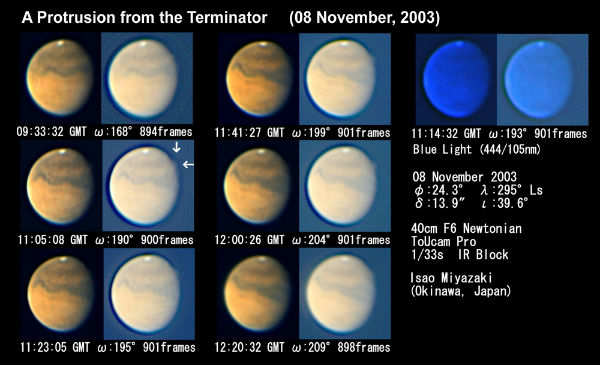
Δεν υπάρχουν σχόλια:
Δημοσίευση σχολίου